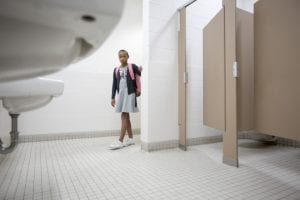May 16, 2024 | Dr. Conan Davis, DMD; Dr. Stuart Lockwood, DMD; Dr. Carly McKenzie, PhD
Introduction
Nationwide, populations in America are migrating away from rural areas to urban areas. We continue to see this happen in Alabama as well. Historically, younger generations returned to their hometowns after college, military service, or other training to work. However, trends in modern times show more and more people are moving away and choosing to stay in the urban centers where they were trained or have served. This trend is particularly affecting the healthcare sector in rural areas, including dentistry.
Trends Affecting Access to Dental Care
Dr. Stuart Lockwood and Dr. Conan Davis wrote about how this trend and others were affecting the field of dentistry and impacting access to dental care in rural areas of Alabama in 2018, published by the Lister Hill Center for Health Policy in 2020. The publication was widely distributed and quoted widely in Alabama in news publications, civic and professional organization publications, and within the dental community. The data presented was used by several organizations, educational institutions, and even interested legislators to promote changes that will eventually impact and improve access to dental care in rural areas of Alabama.
This current paper is an attempt to report on some of the changes that have occurred in the state in the intervening years, update the current data, and propose additional measures to aid in the continuing efforts. Some of the changes we report in this paper will identify positive steps that have been taken by authorities within the state to attempt to rectify the problem of access to dental care. However, we will also describe where we are still observing a further decline in the number of state dentists and dental access in rural areas. We will demonstrate the need for further initiatives.
What has happened with the Alabama dental workforce from 2017 to 2024?
1. Alabama remained 51st in the country in dentists per 100,000 population. We currently have 4.1 dentists to every 10,000 people according to a ranking by the American Dental Association in (2024). The national average is 6.1 dentists per 10,000 people. Additionally, the federal government continues to identify a large number (50) of Alabama’s 67 counties as being federal dental professional shortage areas (see map). Several factors determined the designations.
2. The older dentists of 2017 (33% of all Alabama dentists were 60+ years of age in 2017) are retiring or have retired. In 2024 there were 162 fewer dentists aged 60+ than in 2017 and there were 78 fewer dentists in the 60-64 age category alone. Further, in 30 Alabama counties there were no dentists less than 40 years old, and seven counties had only a single dentist younger than 40 years of age (see map).
3. Many Alabama counties are losing dentists. Overall from 2017 to 2024, there was a net loss of 2 dentists in the state, with 28 of 67 counties having fewer dentists in 2024 than in 2017. Further, 18 counties had no change in the number of dentists, and 21 counties had MORE dentists in 2024 than in 2017. Among the smallest populated 25 counties, 11 of them lost dentists, 12 had no change and 2 counties gained dentists. Among the 13 most urban counties, 7 counties gained dentists and 5 lost dentists.
4. The gender effect is pronounced. Between 2017 and 2024 there was a net loss of 190 male dentists and a net gain of 186 female dentists (28 were unknown). There is a trend that female dentists are more likely to practice in rural Alabama. Among the profoundly rural 41 Alabama counties, there was a net gain of 21 female dentists and a net loss of 9 male dentists.
5. Many dental graduates continue to stay in Jefferson County or leave Alabama entirely. In 2017 there were 543 dentists in Jefferson County alone and 583 dentists in our 54 non-urban counties. This changed very little in 2024, as there are 552 dentists in Jefferson County and 574 dentists in our 54 non-urban counties. In 2017, 156 of 543 (28.3%) dentists were female, and in 2024, 208 of 552 (37.7%) dentists were female.
A 2021 analysis indicated that for UAB School of Dentistry graduates and where they were living in 2021, only 37%, 49%, and 5% of UAB SOD graduates for the previous three years respectively were living in AL in 2021.
In sum, many Alabama counties are at risk of significant loss of dental services soon. A crisis is here. Specific workforce data by county further elucidates the situation:
Nine Alabama counties have either no dentists or only a single dentist in practice:
- 3 counties (Clay, Greene, Wilcox) have no dentists.
- 1 county (Coosa) has one dentist, who is 60 years of age and practices 2 days a week.
- 1 county (Lowndes) has one dentist from a Federally Qualified Health Center in Montgomery who practices in the county 4 days per week.
- 4 counties (Conecuh, Fayette, Perry, Washington) have a single dentist.
In addition, many counties are at risk due to a retirement cliff. For example, a majority of the dentists currently practicing in 15 Alabama counties are over 60 years of age 100% of dentists are 60+ years of age in 4 Alabama counties (Washington, Lawrence, Bullock, Monroe)
- 60-83% of dentists are 60+ years of age in 4 Alabama counties (Marengo, Franklin, Tallapoosa, Macon)
- 50% of dentists are 60+ years of age in 7 Alabama counties (Jackson, Bibb, Butler, Clarke, Marion, Randolph, Sumter)
Therefore, Alabama has 23 counties where dental services are at significant risk in the near future.
Facing the Facts, Addressing the Problem
We speculated in 2018 that Alabama would be facing grave consequences in rural access to dental care in 10-15 years. We proposed that unless significant changes were implemented to affect the current trends in dental practice location selection many areas of the state would be without any reasonably accessible dental services. So, what has transpired in the past 5-6 years since we made these predictions?
Actions Taken
First, a partnership was developed between the Alabama Dental Association (ALDA) leadership and leadership at The University of Alabama at Birmingham School of Dentistry (UAB SOD). The support of these two entities was essential to accomplish everything necessary to make the legislative and policy changes needed. These organizations already had a close working relationship, but we knew greater cooperation was needed to address our issues of joint concern.
Secondly, we shared the data and our concerns about the future of dentistry in this state with news publications around the state, including AL.com, Yellowhammer News, and the publication of the League of Municipalities. All provided news coverage for our concerns, thus helping to elevate the perceived importance and visibility of the issue.
We also published our findings in the Alabama Dental Alumni News and the ALDA newsletter. We spoke at dental conferences and at an Alabama Rural Health Association conference to educate healthprofessionals about our findings. Eventually, state legislators and the Governor were informed about these issues and the consequences of inaction.
Thirdly, we proposed making changes to the state Board of Dental Scholarships to be able to provide full-tuition scholarships to graduating dental students willing to serve in an approved rural practice setting for at least 4 years. Many leaders in the dental community met with the Board and with legislators willing to propose legislation to make these changes. After many rounds of discussion, legislation was passed and signed by the Governor in 2020. The new legislation also provided funding of an additional $500,000 to the existing $220,000 currently in place. Following these changes the focus transitioned from a scholarship award program with small loans to focus entirely on providing scholarships of $180,000 per graduating dental student willing to serve in designated rural areas of Alabama in need of dentists. Currently, we have placed seven dentists in locations of dire need thus far.
Fourthly, the UAB School of Dentistry used data published in our last paper to make the case for Alabama’s need to train more dental students. Previously, approximately 55 dentists graduated from UAB SOD each year for many years, though in recent years this number had been slowly rising. A key component of this increase was an International Dentist Program that allowed UAB SOD to train an additional 12 future dentists per year. However, these numbers were still not adequate to populate the state with the numbers of dentists we needed. In response to the workforce shortage, UAB SOD increased total enrollment by 33 seats which raised the approximate number of yearly graduates to 108 students. This lengthy process involved approvals from both CODA, the national accrediting body, and The University of Alabama System’s Board of Trustees.
The UAB SOD also recognized that development and recruitment programs may help encourage and support promising students from rural and low-income areas of the state to pursue dentistry. This required legislative action, collaborative partnerships, and funding. These programs are designed to better equip students from low-income and rural communities to prepare for and navigate activities related to eventual success in dental education. The basic framework for this program and some initial funding for it has been approved by the legislature but more is needed to accomplish it completely. Some relevant UAB SOD initiatives are as follows:
• Rural Dental Scholar Program: This five-year pathway program models the Rural Medical Scholars Program framework, a very successful initiative developed by the UAB School of Medicine (SOM) in conjunction with the UA College of Community Health Sciences (CCHS). A key part is a 1-year Master’s program focused on Rural Health. Students engage in a biomedical science prep and study skills/test-taking development in addition to a clinical/practitioner mentor component and extensive education about rural healthcare. The first cohort of Rural Dental Scholars (4 students) received their offers in the 2022-2023 admissions cycle and matriculated at UA CCHS in Fall 2023 with UAB SOD matriculation in July 2024. During the 2023-2024 admissions cycle, five Rural Dental Scholars accepted offers to join the upcoming year’s cohort.
• Blazer to DMD: This 5-year “red shirt” pathway program intends to develop promising applicants, with a special focus on applicants whose life experiences align with Alabama’s residents, including rural residents. Our initial cohort of 3 students completed a 1-year Master’s program at UAB in Spring 2023 and matriculated as D1’s at SOD in July 2023. Two Blaze to DMD students are expected to matriculate at UAB SOD in July 2024. Four applicants accepted offers to compose the next Blaze to DMD cohort.
• Virtual Education and Engagement Program (VEEP): This development and recruitment program is part of a Health Resources Services Administration (HRSA) grant led by the School of Dentistry faculty. The UAB SOD Admissions team implemented the first program in Spring 2023 and executed the second in Spring 2024. This virtual seminar series is intended to develop, recruit, and engage future applicants from disadvantaged populations with Alabama residents as the primary target. Current plans include 10 scholars in each cohort and DAT Bootcamp access included, as funded by a 3-year HRSA grant. Seminar topics include preparing a competitive admissions portfolio, options for funding dental education, ways to use a DMD degree, and mock interviews with admissions committee members. Scholars also benefit from mentorship programs that connect them with both current dental students and practitioners.
• Board of Dental Scholarships: This initiative is facilitated and supported by UAB SOD although it’s a separate entity housed outside of UAB SOD. This group awards funds to practitioners agreeing to practice in an approved rural AL area for 4-5 years. Several of the pathway programs detailed above are intended to help increase future BDS awards.
• Rural Dental Health Scholar Program: This residential summer program targets rising high school seniors from rural communities in Alabama who express an interest in dentistry. UAB SOD and UA CCHS have partnered to expand the existing Rural Health Scholars summer cohort to target future dentists. The initial cohort of seven will participate in Summer 2024, courtesy of the Board of Dental Scholarships, who have graciously agreed to help fund scholarships for the Rural Dental Health Scholars to participate. The eventual goal is to have 10 high school students enrolled each summer as Rural Dental Health Scholars.
In summary, all the actions and efforts that many in Alabama have pursued over the last 5-6 years should be applauded. Much has been accomplished. We are pleased with the response of our state dentists, educators, and legislators in recognizing this potential crisis. However, we have not yet seen the turn-around in access to dental care in rural Alabama that is so desperately needed. Additionally, there are other issues that we believe affect the reluctance of new dental graduates to select a more rural area to practice. In addition to the issues previously outlined, educational debt may be an increasingly weighty influence for recent dental graduates when selecting practice locations and environments. The increasing presence of corporate dental practices in rural areas may also be influential. Young dentists can begin working in these group practices and receive a healthy salary to help pay off debt while not incurring additional debt and overhead expenses, hence their popularity with graduates.
Many additional programs and activities will be required to close the gap in access to dental services, especially in Alabama’s rural areas. These are yet to be addressed or considered, but we remain optimistic that solutions can be developed.












